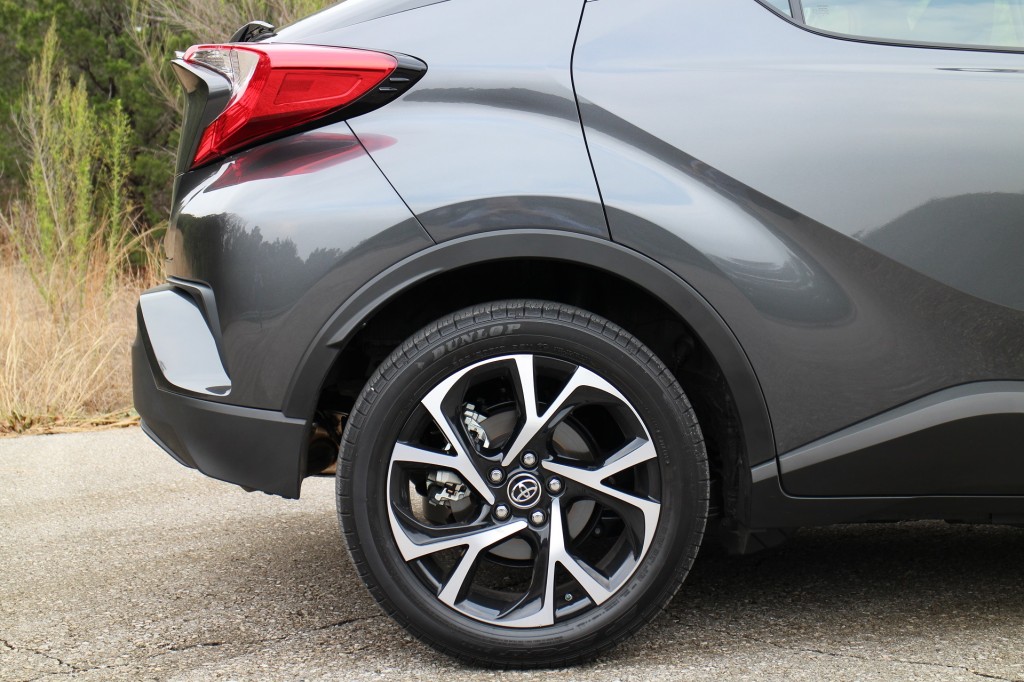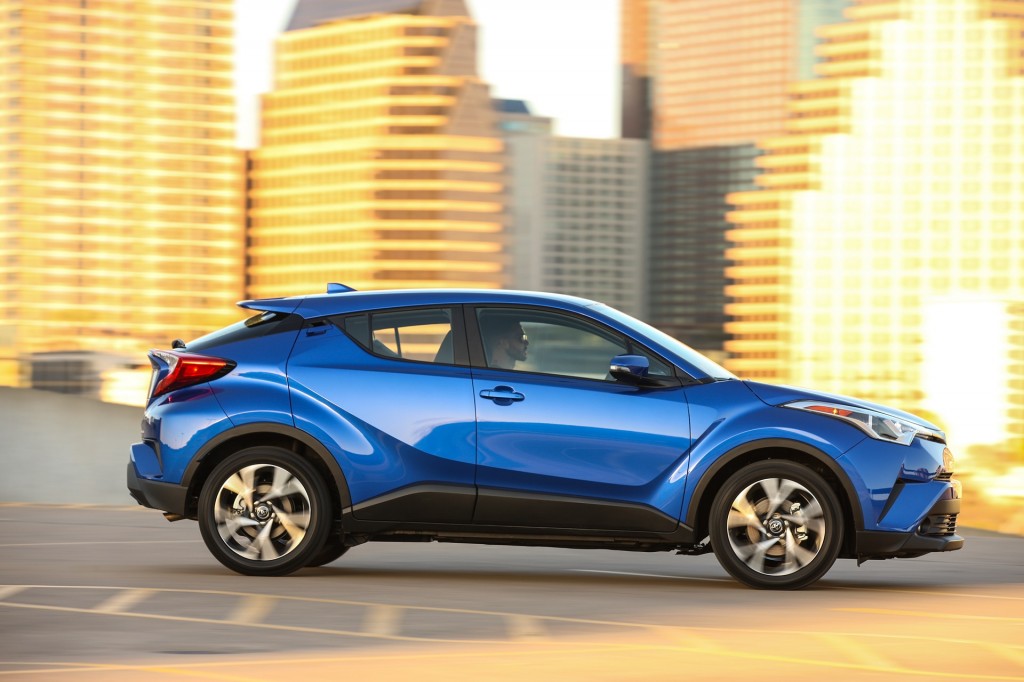Sport-utility vehicles started out as truck offshoots, essentially tall wagon bodies on truck underpinnings.
Think of the first Chevy Suburban in 1935, which remained a specialty vehicle (mostly for Texans) for its first 40 years.
Fast-forward another 40 years, and my, how things have changed.
DON'T MISS: 2018 Toyota C-HR - full review
With steadily increasing fuel-economy rules, buyers not only in North America but worldwide are migrated from passenger sedans, wagons, and hatchbacks into what are called "crossover utility vehicles."
They look sort of like the old SUVs, but they're built on car underpinnings, they have all the features you'd find in any car, and increasingly they come in a wide variety of sizes.
Enter the 2018 Toyota C-HR, a compact hatchback that the company is positioning as a "crossover" for style-conscious younger buyers.

2018 Toyota C-HR, San Antonio, Texas, Feb 2017
The styling of the new C-HR is pretty remarkable, and we think it's the first successful implementation of the company's new design language that's misfired in the Mirai fuel-cell sedan and the latest Prius hybrid hatchback (though the Prius Prime plug-in hybrid is better).
The swoops, accents, and exaggerated lines of the C-HR (it stands for Coupe, High Riding) grew on us. We spent a day with a couple of versions of the car on a first-drive event in San Antonio last month, and we've ended up fond of it.
Rather to our own surprise, frankly.
READ THIS: Another tiny SUV? No AWD for 2018 Toyota C-HR subcompact crossover (Nov 2016)
The interior comes only in black, a drawback in our eyes, but it's less stylized and recognizably Toyota.
It's also comfortable front and rear: the C-HR turns out to be a larger car inside than its lines indicate from the outside, where it can appear to be a subcompact.
The C-HR is built on a shortened version of the same underpinnings used for the Prius and also the 2018 Camry mid-size sedan, so it's wide for its length.

2018 Toyota C-HR
The front seats are comfortably bolstered, and back-seat riders sit more upright than in other small hatchbacks, which sometime lower the seat, producing a knees-up position. There's plenty of headroom in both rows too.
While the rear three-quarter vision is minimal to non-existent (a rear-view camera is standard), rear-seat riders actually get a decent view out the windows. We hadn't expected that, either.
The 2018 C-HR has only a single powertrain, a 144-horsepower 4-cylinder engine paired with a continuously variable transmission.
CHECK OUT: Lexus UX small crossover may get hybrid version that Toyota C-HR won't
It also doesn't offer all-wheel drive in North America, although both AWD and hybrid versions are offered in European and Asian markets.
Toyota projects that the U.S. version of the C-HR will be rated by the EPA at 27 mpg city, 31 mpg highway, 29 mpg combined. That's not very impressive for the category, likely due to the C-HR's substantial 3,300-pound weight.
That number is likely a bit lower than it would have been last year, before the EPA tweaked its calculations for the 2017 model year.

2018 Toyota C-HR
The C-HR's on-road behavior, however, is considerably better than we've come to expect from Toyotas of late.
It's often remarked that CEO and family scion Akio Toyoda is a race driver in his spare time, and his influence on the driving character of new Toyotas—starting with the fourth-generation Prius in 2016—has been substantial.
It's no Mazda, but the C-HR tracks accurately, has relatively little body roll for a car that sits higher than other hatchbacks, and has adequate if not stellar steering feel.
WEIGH IN: Are you driving a car, a crossover, an SUV, or a truck? Do you care?
Sitting below the high-volume Toyota RAV4 compact crossover, the C-HR was originally going to be sold as a Scion in the U.S.
That means it's well-equipped for the segment, with lots of standard equipment, just two trim levels—XLE and XLE Premium—and only a single option, the contrasting-color roof known as "R-Code" that's offered with three of its seven body colors.
Every C-HR has power windows, locks, and mirrors; 18-inch wheels; dual-zone climate control; a 7.0-inch touchscreen audio system with steering-wheel controls; and a rearview camera.

2018 Toyota C-HR
The XLE Premium adds blind-spot monitors, a power driver's seat with more adjustments, heated front seats, a keyless ignition, fog lights, and turn signals in the door mirrors.
The audio system on both versions includes AM/FM/HD radio, a USB port, and Bluetooth pairing for audio streaming and voice controls.
Toyota remains adamant that it will not include Apple CarPlay or Android Auto. That seems an increasingly puzzling omission for 2018, especially among the younger buyers Toyota is targeting with the C-HR.
Buyers who want to personalize their C-HRs can choose from almost two dozen appearance, utility, and performance accessories at the dealer, following the model established by Mini, Scion, and other stylish small-car brands.
The C-HR XLE starts at roughly $23,500 including delivery, while the Premium adds $850 more. While The C-HR includes a few niceties you wouldn't expect in a car this size (a rear cargo light, for example), that's still a lot of money for a compact to mid-size hatchback for four people.
The price underscores the goal of taking the C-HR well out of that segment and into the “personal statement” category of small cars.

2018 Toyota C-HR, San Antonio, Texas, Feb 2017
Whether Toyota can convince buyers that this tall hatchback is a "crossover" sans all-wheel drive and the ground clearance typical of the breed remains in doubt.
But if nothing else, the usually conservative Japanese carmaker is right on trend: the Chevrolet Bolt EV and Kia Niro are also five-door hatchbacks being pitched as "crossovers" despite their lack of all-wheel drive.
_______________________________________














